AI Tools for Drought-Resilient Irrigation
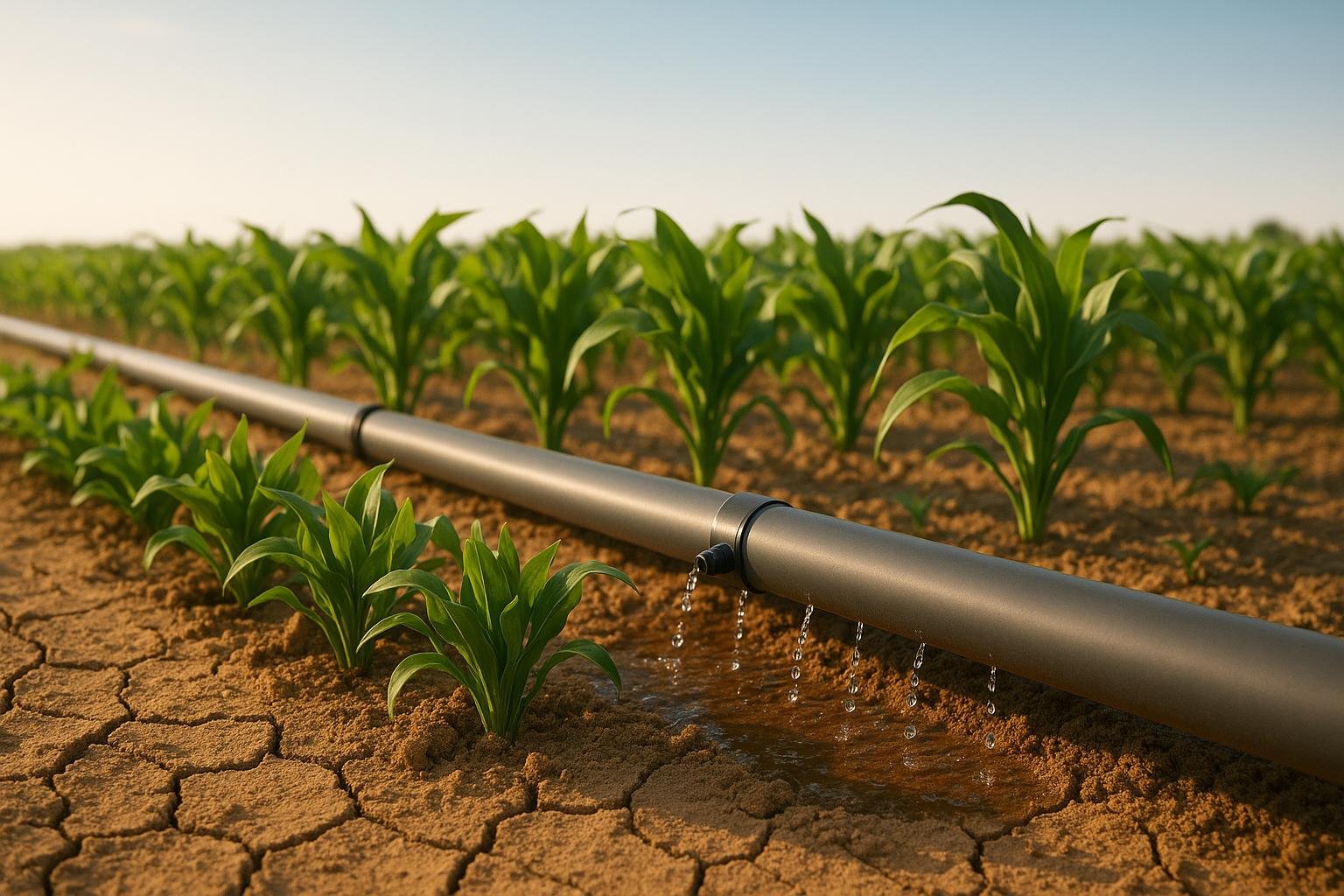
Droughts cost U.S. agriculture over $9 billion annually, consuming 85% of the nation's water. AI-powered irrigation systems are transforming water management, helping farmers save 30–50% on water while boosting yields by 20–30%. These tools use real-time data from sensors, weather forecasts, and AI to optimize water use, reduce waste, and improve crop health. Here are five leading solutions:
- AIGardenPlanner: Ideal for home gardeners and landscapers, offering tailored irrigation schedules and real-time moisture tracking. Pricing starts at $15.
- CropX: Combines soil sensors, satellite data, and predictive analytics for precision irrigation. Saves up to 25% water. Costs range from $300–$800 per system.
- Farmonaut's Jeevn AI: Uses satellite imagery and AI to cut water use by 30–40% and improve yields. Monthly plans range from $30–$100.
- Arable Mark 3: Advanced multi-sensor system for research and data-heavy farms, reducing water use by 35%. Costs $500–$1,200.
- Netafim Precision Irrigation: Delivers water directly to plant roots with 95% efficiency, suitable for all farm sizes. Pricing varies from $150 to $50,000.
Quick Comparison:
| Tool | Best For | Water Savings | Starting Price | Features |
|---|---|---|---|---|
| AIGardenPlanner | Home gardens, landscaping | 30–50% | $15 | AI schedules, real-time tracking |
| CropX | Commercial farms | Up to 25% | $300 | Sensors, satellite data |
| Farmonaut's Jeevn AI | Small to medium farms | 30–40% | $30/month | Satellite monitoring, advisories |
| Arable Mark 3 | Data-focused farms | 35% | $500 | Multi-sensor, evapotranspiration |
| Netafim Precision | All farm sizes | 30–50% | $150 | Drip irrigation, real-time data |
These tools offer practical solutions for precise water management, helping farmers and gardeners tackle drought challenges efficiently.
The Future of Irrigation How AI Saves Water & Grows Crops

1. AIGardenPlanner
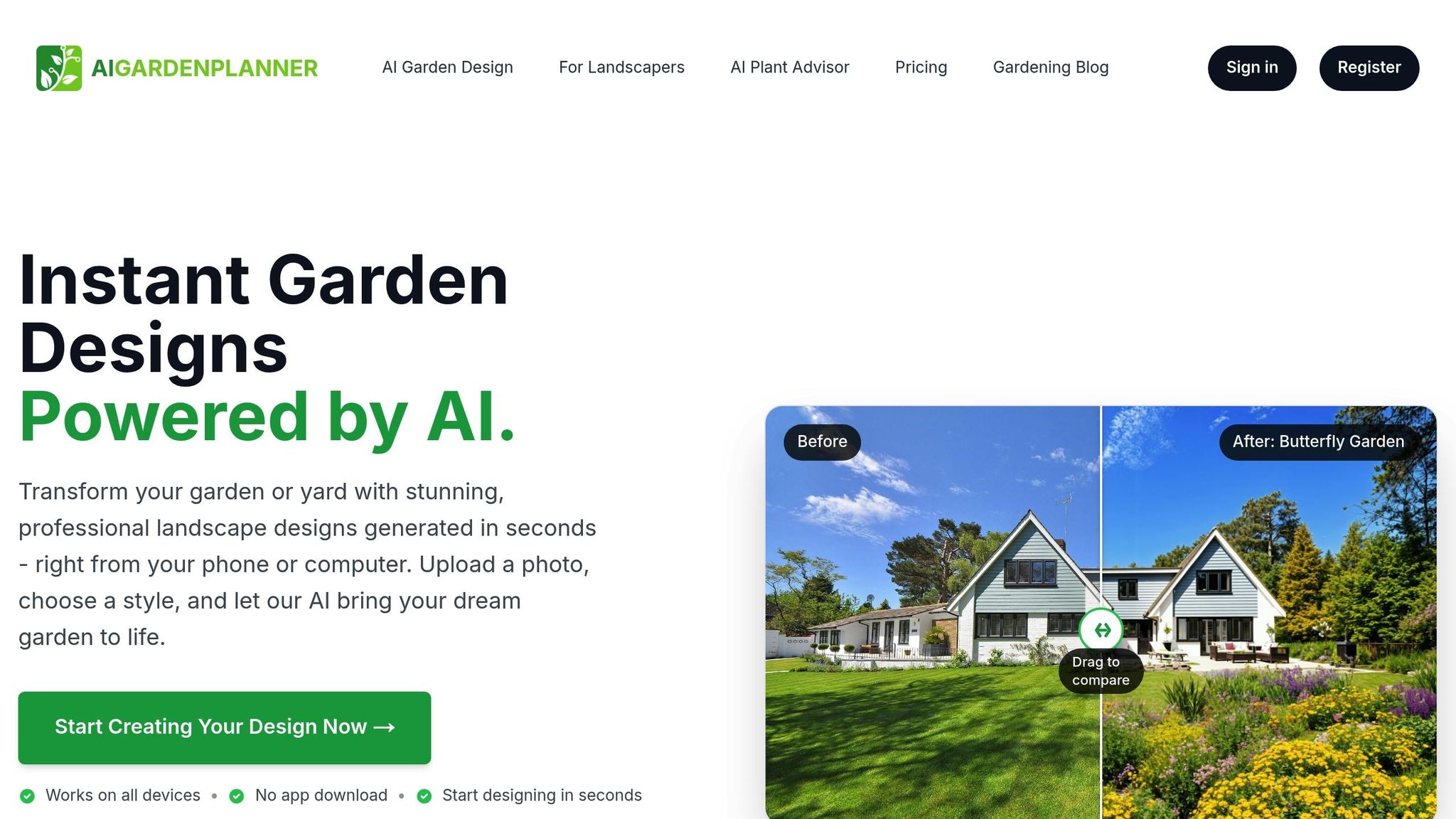
AIGardenPlanner is a free tool designed to improve garden planning and irrigation, especially in areas prone to drought. While it’s popular for turning garden photos into polished landscape designs, its real strength lies in using advanced technology to help conserve water and keep gardens thriving under challenging conditions. Here's how it stands out in water management and garden care.
Water Efficiency and Real-time Data Integration
AIGardenPlanner combines soil sensors, local weather data, and plant-specific needs to create tailored irrigation schedules that prioritize water conservation [2]. It monitors soil moisture in real time, adjusts for local water restrictions, and even predicts drought stress. Plus, it offers water usage tracking and helpful conservation tips, making it easier for gardeners to manage resources wisely.
The platform also features a robust weather forecasting system. It delivers hyperlocal updates, including frost or heat warnings, UV and solar data, wind conditions, and evapotranspiration rates [2]. By integrating this information with soil and plant data, the tool adjusts irrigation strategies on the fly, ensuring plants get just the right amount of water - avoiding both overwatering and underwatering.
Scalability for Different Users
Whether you’re a home gardener or a professional landscaper, AIGardenPlanner has options for you. Home users can manage up to 50 garden spaces and receive five plant recommendations per area [3]. For larger-scale operations, the platform offers paid tiers: Pro at $49/month and Premium at $99/month. These plans support up to 1,000 projects, making it a valuable tool for commercial landscapers managing extensive properties.
Ease of Remote Management
The tool integrates seamlessly with smart garden devices, allowing users to monitor and adjust irrigation schedules remotely. Its user-friendly interface calculates optimal watering plans based on plant needs, soil conditions, and weather forecasts. This simplifies irrigation management and ensures gardens stay healthy, even during droughts.
2. CropX
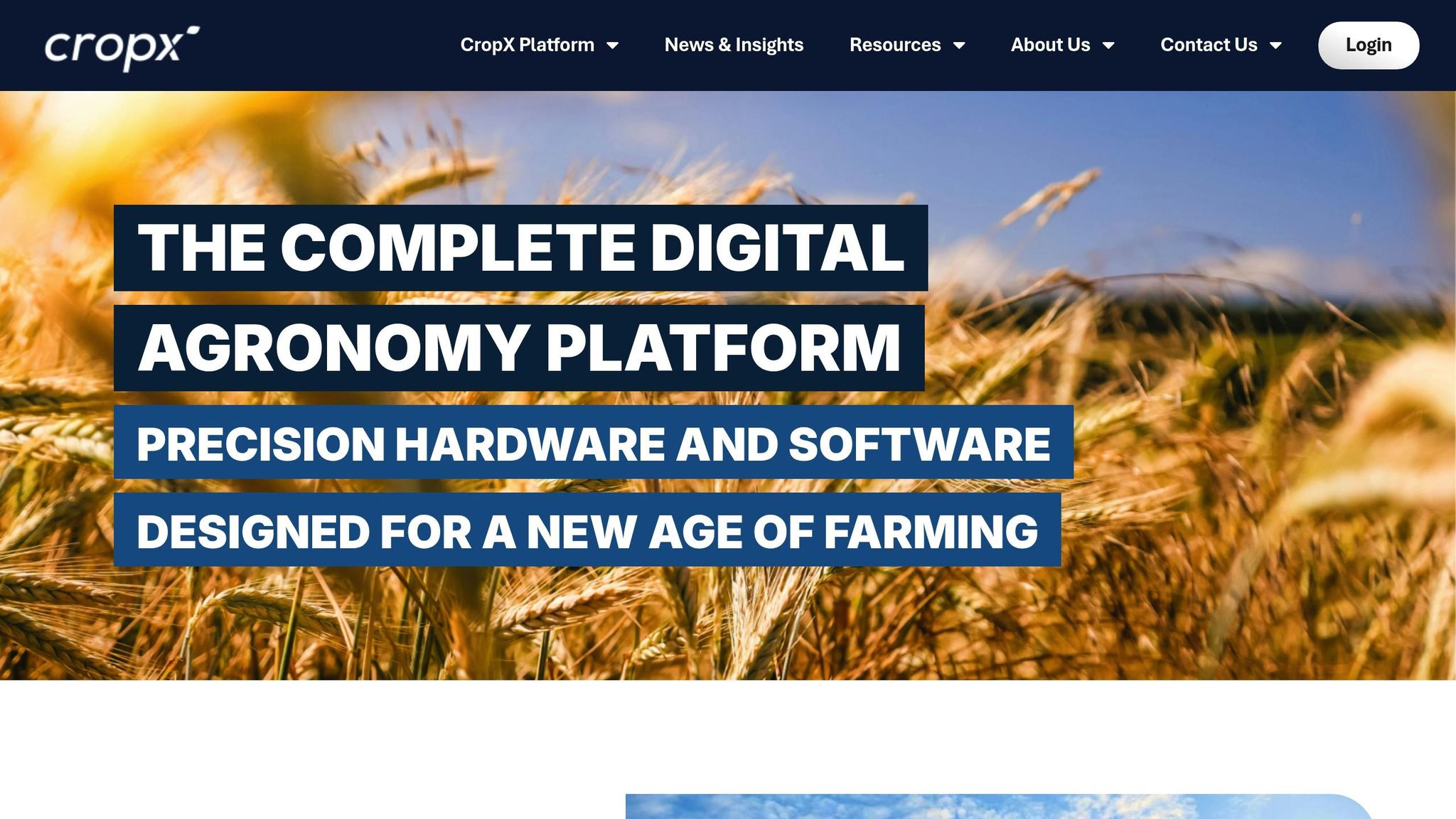
CropX uses a combination of sensors, satellite imagery, and weather data to provide precise irrigation guidance, particularly valuable during drought conditions. Its strength lies in blending various data sources and transforming them into practical irrigation recommendations. This approach helps cut water usage while maintaining healthy crops, forming the core of CropX's irrigation strategy.
Real-time Data Integration
By integrating in-field sensors, satellite data, and machinery inputs, CropX delivers tailored irrigation guidance powered by AI and agronomic models [4]. Using an AWS-based system, it combines data from imaging, weather, topography, crop, and hydraulic models with in-soil data [5].
"Our app displays real-time soil readings and moisture levels with alerts for extremes", explains Sagi Briteman, Vice President of Research and Development at CropX [5].
This real-time monitoring allows farmers to act before visible signs of plant stress appear by leveraging soil and Actual Evapotranspiration (ET) sensor data [6]. The system continuously tracks soil and crop conditions, offering critical support for managing irrigation during droughts [5].
Boosting Water Efficiency
CropX has shown it can save up to 50% of water while increasing yields by 20% across 100 different crop types [5]. The platform automates irrigation schedules and supports variable-rate irrigation, tailoring water use to each field’s specific needs [6].
The Actual ET sensor enhances understanding of water use at both soil and plant levels, enabling smarter irrigation decisions and remote management [7].
For example, in partnership with PepsiCo Mexico, CropX has helped potato farmers cut water use by up to 25% by providing real-time recommendations for precise irrigation [5]. Similarly, Dairy Holdings in New Zealand reduced irrigation by 30% while improving both yield quality and quantity [7].
Designed for Scalability
CropX is used in over 70 countries, supports more than 75 crop types, and serves over 10,000 farms [4][9]. Its DIY sensor installation and online setup make it accessible to farms of all sizes, from small family plots to massive agribusinesses [9].
"CropX's platform is scalable, meaning it can be used by both small-scale family farms and large commercial operations, ensuring that its benefits are accessible to a broad range of agricultural producers", says Tomer Tzach, CEO [8].
The patented sensors are easy to install, requiring no technician. A simple 5-minute setup makes it convenient for farms of any size [9]. Colin Glass, CEO of Dairy Holdings, shared his experience:
"CropX has provided us with simplicity at scale. The technology turns something complex into something we can understand. It allows for more confident decision-making and greater transparency across our farms. This means our farm managers can learn from each other, further improving efficiencies, and we can standardize data management and reporting." [9]
Simplifying Remote Management
CropX’s design also supports remote management through its app. In 2024, the platform introduced variable rate application (VRA) planning, allowing farmers to optimize seeding, irrigation, and fertilizers based on field variations [7]. It integrates with variable rate irrigation (VRI) technology, making irrigation scripts easier to create and water management more customizable [7].
"CropX's new VRA capability offers another pathway to farm optimization. By allowing farmers to apply inputs and seeding more accurately and efficiently, we are not only improving crop health and yield but also contributing to more sustainable agricultural practices. This integration with our enhanced VRI technology provides a comprehensive solution that addresses the diverse needs of modern farming." – Taha Ghaznavi, Global SVP Product of CropX [7]
The system provides specific recommendations for irrigation timing and amounts, making remote farm management easier. This feature is especially valuable during droughts, where precise water management can mean the difference between saving or losing crops.
🚀 Ready to Reinvent Your Garden?
Join thousands of homeowners who have transformed their gardens using our AI design tool. Upload one photo to explore endless possibilities.
Get your AI garden designs →3. Farmonaut's Jeevn AI Advisory System
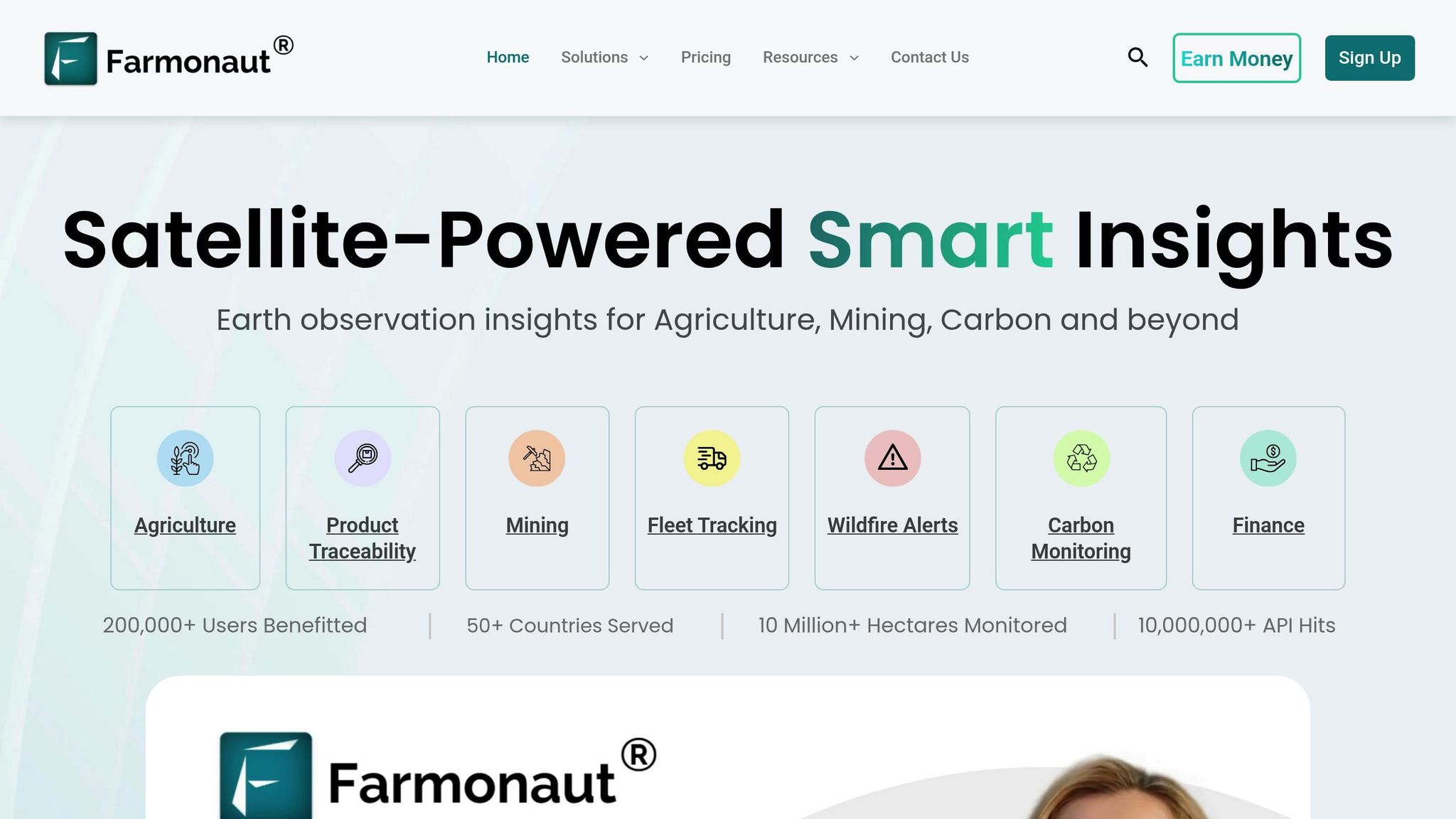
Farmonaut's Jeevn AI Advisory System takes water management during droughts to the next level by combining satellite technology with AI. This system delivers customized advisories, weather forecasts, and irrigation strategies tailored to specific crops and field conditions [10][11]. With features like daily field tracking, dry spot detection, and precise irrigation scheduling, Jeevn AI offers weather-based recommendations and multi-layer visualizations to help farmers manage water resources effectively [11].
Water Efficiency Optimization
Jeevn AI plays a pivotal role in reducing water waste while increasing agricultural productivity. Studies reveal that AI-driven irrigation systems can cut water usage by 30–70% and boost yields by up to 4.3% compared to traditional methods [11]. Users of Jeevn AI have reported up to a 25% decrease in water consumption [14]. Field studies, such as those focusing on legume farming in Uttar Pradesh and monitoring over 100,000 hectares through fieldWISE, demonstrate how AI-based systems can reduce water use by 25% while improving yields and lowering costs [11][12][14].
Scalability for Different Users
Jeevn AI is designed to cater to a wide range of users - from small-scale farmers to large agribusinesses. Currently, the platform supports over 200,000 users and more than 100 businesses worldwide [13][14]. By leveraging satellite data, local weather patterns, and unique farm conditions, it delivers personalized farm advisories [13]. Farmers using Jeevn AI have reported impressive results, including up to a 20% increase in crop yields and a 30% reduction in pesticide use. The system's crop health monitoring feature achieves over 90% accuracy [14].
User feedback underscores its transformative impact:
"JEEVN AI has revolutionized the way I manage my 500-acre corn farm. The precision it offers in terms of fertilizer application and irrigation has not only increased my yields but also significantly reduced my input costs." – John D., Iowa, USA [14]
Ease of Remote Management
Managing farms remotely becomes seamless with Jeevn AI's interactive satellite reports, accessible via both web and mobile apps. These tools enable users to map fields, integrate data, and receive tailored insights quickly [14]. Automated satellite monitoring eliminates the need for manual inspections, offering data-driven insights that replace guesswork [14]. This has proven especially beneficial for vineyard owners:
"As a vineyard owner, the early pest detection feature of JEEVN AI has been a game-changer. Last season, we were able to prevent a potentially devastating fungal outbreak thanks to the early warning from the system." – Maria S., Tuscany, Italy [14]
For those with larger-scale operations or specific needs, Farmonaut offers direct contact options to explore partnerships or custom solutions [13]. This streamlined remote management paves the way for further advancements in precision irrigation, which will be discussed in the next section on Netafim Precision Irrigation.
sbb-itb-4d6a8dd
4. Arable Mark 3
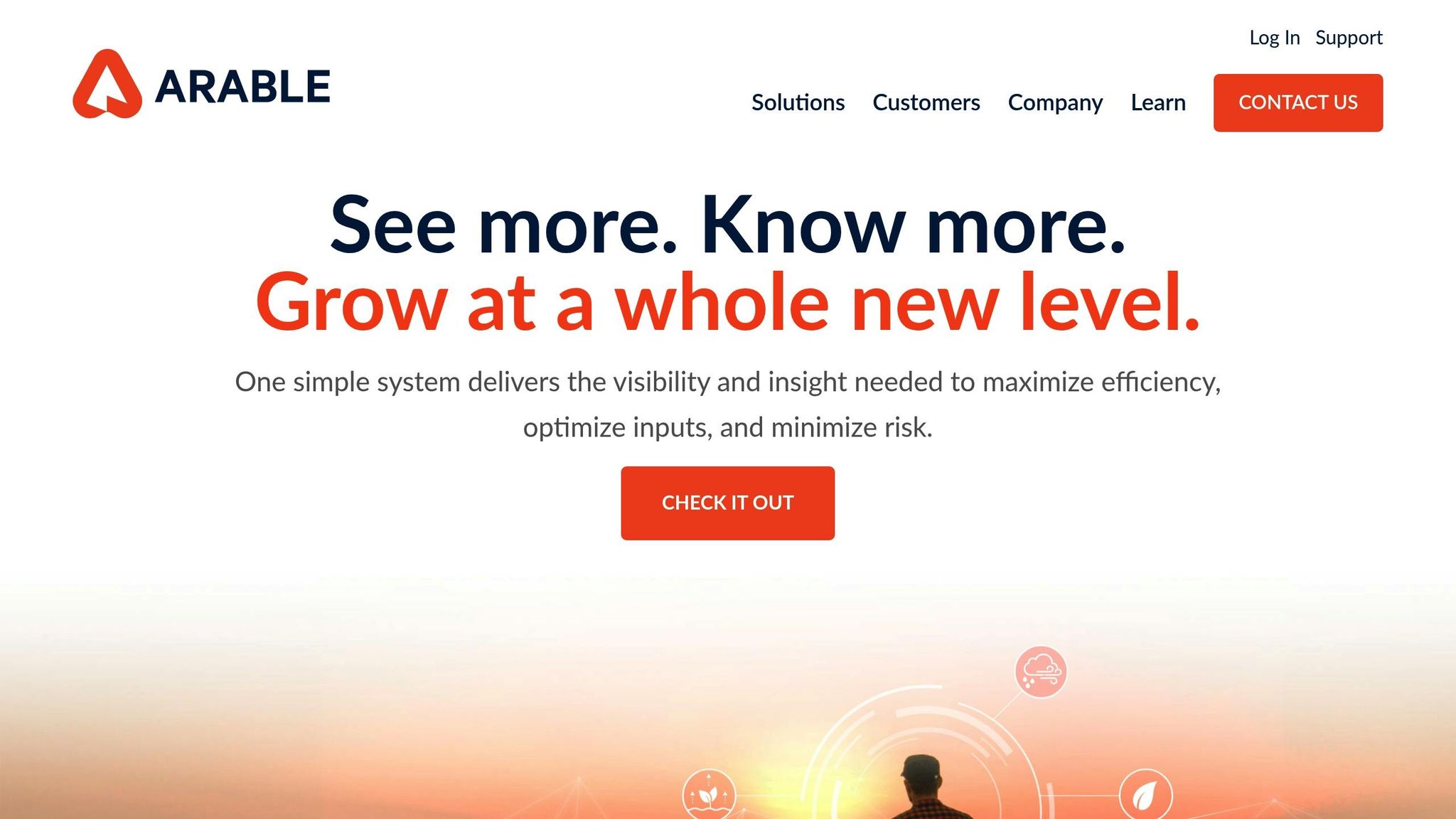
The Arable Mark 3 brings together weather, plant, soil, and irrigation data, pairing it with advanced machine learning to provide precise, field-specific insights into crop water balance needs during drought conditions [30, 33].
Real-time Data Integration
The Mark 3 pulls data from various sources, including thermal sensors capable of one-degree precision, to identify early signs of water stress and analyze a crop's drought tolerance and water demand [18]. It tracks key factors like evapotranspiration, weather patterns, crop growth stages, soil moisture levels, and irrigation inputs. This comprehensive monitoring allows for the early detection of water stress, enabling timely interventions [15].
"At Arable we believe that better data drives better decisions, and with the Mark 3 we are setting a new standard not just in complete, trustworthy data, but also actionable insights - and doing it all in one simple solution."
– Jim Ethington, CEO of Arable [15]
Optimizing Water Use
Using these real-time insights, the Mark 3 fine-tunes irrigation practices with remarkable precision. It eliminates guesswork by determining exactly when and how much to irrigate, ensuring soil moisture stays at ideal levels. Users have reported impressive results, including up to a 22% reduction in irrigation and a 15% decrease in pesticide use - all without compromising crop yields [19].
"Arable's innovative solution is our 'Water Monitoring Solution of the Year' as it takes water monitoring to the next level", said Bryan Vaughn, Managing Director, AgTech Breakthrough [17].
Designed for All Scales
The Mark 3 is built for effortless deployment and requires no maintenance, making it accessible to farms and operations of all sizes. Currently, it’s being used by forward-thinking organizations in over 50 countries and has helped customers in more than 30 countries improve water use, crop protection, fertilization, field work, research trials, and sustainability efforts [29, 36, 37]. A standout example is its collaboration with Bonsucro and Raízen in Brazil, where it improved sugarcane irrigation efficiency and production management by tailoring strategies to local microclimates [16].
Remote Management Capabilities
The Mark 3 also excels in remote farm management, providing vital insights for premium agricultural operations. For instance, Treasury Americas, a leading wine producer, uses the system to make critical decisions remotely while maintaining high-quality production.
"The Arable system provides essential insights when we need it and plays a pivotal role in producing high-quality wine sustainably, something that is extremely important to us and our vision for a brighter future."
– Will Drayton, Director of Technical Viticulture, Sustainability, and Research, Treasury Americas [15]
This focus on remote monitoring aligns with the growing demand for sustainable water management. Bryan Vaughn of AgTech Breakthrough highlights this importance:
"Real-time, in-field water monitoring is essential for optimizing agricultural irrigation practices. The insights provided by Arable make it possible to optimize irrigation strategies, align with the urgent need for sustainable water management and maximize the potential of every precious drop."
[17]
5. Netafim Precision Irrigation
Netafim's precision irrigation system delivers water and nutrients directly to plant roots in carefully measured amounts. This method ensures plants get the right amount of moisture while cutting down on the waste often seen with older irrigation techniques [21][22].
By using drip irrigation, Netafim significantly reduces evaporation and runoff, achieving an impressive 95% water use efficiency. In comparison, pivot irrigation achieves 80–85%, and furrow irrigation only about 60% [22]. This efficiency means farmers can irrigate up to 30% more land using the same amount of water [21]. The system's GrowSphere™ MAX technology takes things further by remotely managing both water and nutrient delivery, ensuring plants receive exactly what they need - even during periods of water scarcity [20]. This precision works hand-in-hand with other AI tools to help farmers adapt to drought conditions.
Real-time Data Integration
Netafim's GrowSphere™ OS connects controllers, sensors, cloud platforms, and smartphones, allowing for real-time monitoring and adjustments [23]. The NetBeat™ platform integrates live data on crops, soil, and weather with advanced models to guide irrigation decisions [25][26]. As Guy Leventon, VP of Digital Farming at Netafim, puts it:
"We designed NetBeat™ to be an open platform since we believe that joint innovation is the way of the future" [25].
This seamless integration of real-time data emphasizes how AI can play a key role in optimizing water use during droughts.
Scalability for Different Users
Netafim's irrigation systems cater to everyone, from home gardeners to large-scale commercial farms. For smaller setups, the company offers Multi-Outlet Dripper assemblies, which can be scaled up to manage operations covering over 10,000 square feet [27]. The simplicity of the system, built around basic components like tubes, hoses, and connectors, makes it easy for smaller farmers to start with a plug-and-play setup and expand as needed [24][28].
Refik Yenice, a farmer in Turkey, shares his experience:
"Thanks to Netafim's GrowSphere™ Max, we are able to take advantage of separating our corn and citrus irrigation lines while using a single device. This allows us to use less water and energy without stressing the plant. This provides a reduction in input costs and we can supervise our land with fewer personnel." [20]
This scalability ensures that farmers of all sizes can benefit from efficient and remote-controlled irrigation.
Ease of Remote Management
GrowSphere™ OS features a single-view dashboard that simplifies irrigation management [23]. Farmers can use mobile apps and cloud platforms to oversee their systems, with automated tools collecting data on soil conditions, water usage, and crop health [24]. This remote accessibility is especially useful during droughts, enabling farmers to make informed decisions without being physically present in the field.
Feature Comparison Chart
Here’s a quick side-by-side look at some of the top tools available, focusing on their features, water savings, and ease of use. This should help you decide which solution best suits your needs.
| Tool | Best For | Key Features | Water Savings | Pricing | Complexity |
|---|---|---|---|---|---|
| AIGardenPlanner | Home gardeners, landscapers | AI garden design, 50+ styles, plant-specific advice by region, growing guides | Optimized plant selection for drought-prone areas | $15 one-time to $99/month | Low – user-friendly interface |
| CropX | Commercial farms, precision agriculture | Soil sensors, predictive analytics, automated irrigation | Cuts water use by up to 25% | $300–$800 per controller system | Medium – requires sensor setup |
| Farmonaut's Jeevn AI | Small to medium farms | Satellite monitoring, crop health insights, weather-based planning | 30–40% water savings over traditional methods | $30–$100/month | Medium – cloud-based platform |
| Arable Mark 3 | Research farms, data-focused operations | Multi-sensor weather stations, evapotranspiration tracking, real-time alerts | Reduces water use by 35% | $500–$1,200 per station | High – advanced data analysis required |
| Netafim Precision | Farms of all sizes | Drip irrigation, GrowSphere™ tech, remote management, 95% water efficiency | 30–50% water savings, 20–30% yield boost | $150–$50,000 depending on scale | Low to Medium – adaptable complexity |
Each tool offers a unique approach to water conservation and efficiency. For instance, AI-powered irrigation systems can help achieve 30–50% water savings and improve crop yields by 20–30% when compared to older methods [1].
On top of that, financial support can make adopting these technologies more feasible. Farmers can explore grants and cost-sharing programs designed to ease the transition to water-efficient systems.
This chart serves as a starting point for understanding how these tools can make a difference in water management and productivity.
🎨 Visualize Your Dream Garden Today!
Transform any outdoor space into a professional landscape design in minutes. Just upload a photo, choose your style, and let our AI do the rest.
Start your garden transformation now →Final Thoughts
AI is reshaping irrigation, bringing efficiency and sustainability to agriculture. For example, farms using precision agriculture platforms have seen impressive results: a 25% reduction in water usage, a 30% decrease in chemical runoff, and a 20% boost in yields [1].
These systems don't just improve environmental outcomes - they also cut operational costs by 30–50% and reduce chemical usage by up to 50%, significantly lowering contamination risks [1]. In the U.S., investment in digital water solutions is expected to grow at 6.5% annually, reaching $10.8 billion by 2030 [30].
Looking ahead, advancements in AI will continue to refine water management. Models are being developed to predict droughts more accurately and optimize water use during extreme weather events [31]. Emerging tools like blockchain for tracking water usage and AI-powered solar irrigation systems are set to make sustainable practices even more accessible and energy-efficient [31].
For better water management, consider adopting sensor-based monitoring and drip irrigation systems [1]. With the global AI market projected to grow 37.3% between 2023 and 2030 [29], these tools will only become more advanced and affordable.
"There is limited data we currently have to make expensive decisions around maintaining our pipe network. With VODA.ai's daVinci machine learning technology, we will be able to make smart decisions, save valuable resources, and protect our water infrastructure."
- Tim Thomure, previous Director of the Tucson Water Department [29]
Whether you're a home gardener or running a large-scale farm, AI-driven irrigation offers a practical way to cut costs, conserve resources, and increase yields. From tools like AIGardenPlanner to Netafim, these innovations point the way to a more water-efficient future for agriculture.
FAQs
How do AI-powered irrigation systems help conserve water during droughts?
AI-powered irrigation systems rely on real-time data from soil moisture sensors, weather forecasts, and other environmental factors to automatically adjust watering schedules and amounts. By analyzing both current conditions and historical trends, these systems ensure water is used wisely, cutting down on waste while keeping crops healthy.
With the help of machine learning, these systems can predict the most effective times to irrigate, potentially reducing water use by up to 40%. This approach not only conserves precious resources but also promotes smarter water management, especially during droughts.
How can AI-powered irrigation tools like AIGardenPlanner help farmers save money and improve efficiency?
AI-driven irrigation tools, such as AIGardenPlanner, are transforming the way farmers manage water resources. By cutting water usage by an estimated 25–50%, these tools help significantly reduce water bills. Beyond cost savings, they fine-tune irrigation schedules and resource allocation, promoting healthier crops and boosting yields - often by 20–30%.
Though there’s an initial investment involved, the long-term benefits, including lower water expenses and higher crop profitability, usually outweigh the upfront costs. These tools offer a practical and economical approach to achieving more resilient farming practices, especially in areas prone to drought.
How can small-scale farmers and home gardeners use AI irrigation tools to improve water efficiency and crop health?
AI irrigation tools are transforming how small-scale farmers and home gardeners manage water, helping them cut costs, save resources, and improve crop health. By using real-time data - such as soil moisture levels and weather conditions - these systems create precise watering schedules. The result? Crops get the exact amount of water they need, right when and where they need it. This approach can slash water usage by as much as 50%, all while enhancing plant growth and boosting productivity.
Unlike traditional methods, AI-powered irrigation significantly reduces waste and makes the most of available resources. It ensures crops get consistent care, making it a game-changer for tackling drought conditions and maintaining thriving gardens or farms with much less effort.
Related posts
Related Articles
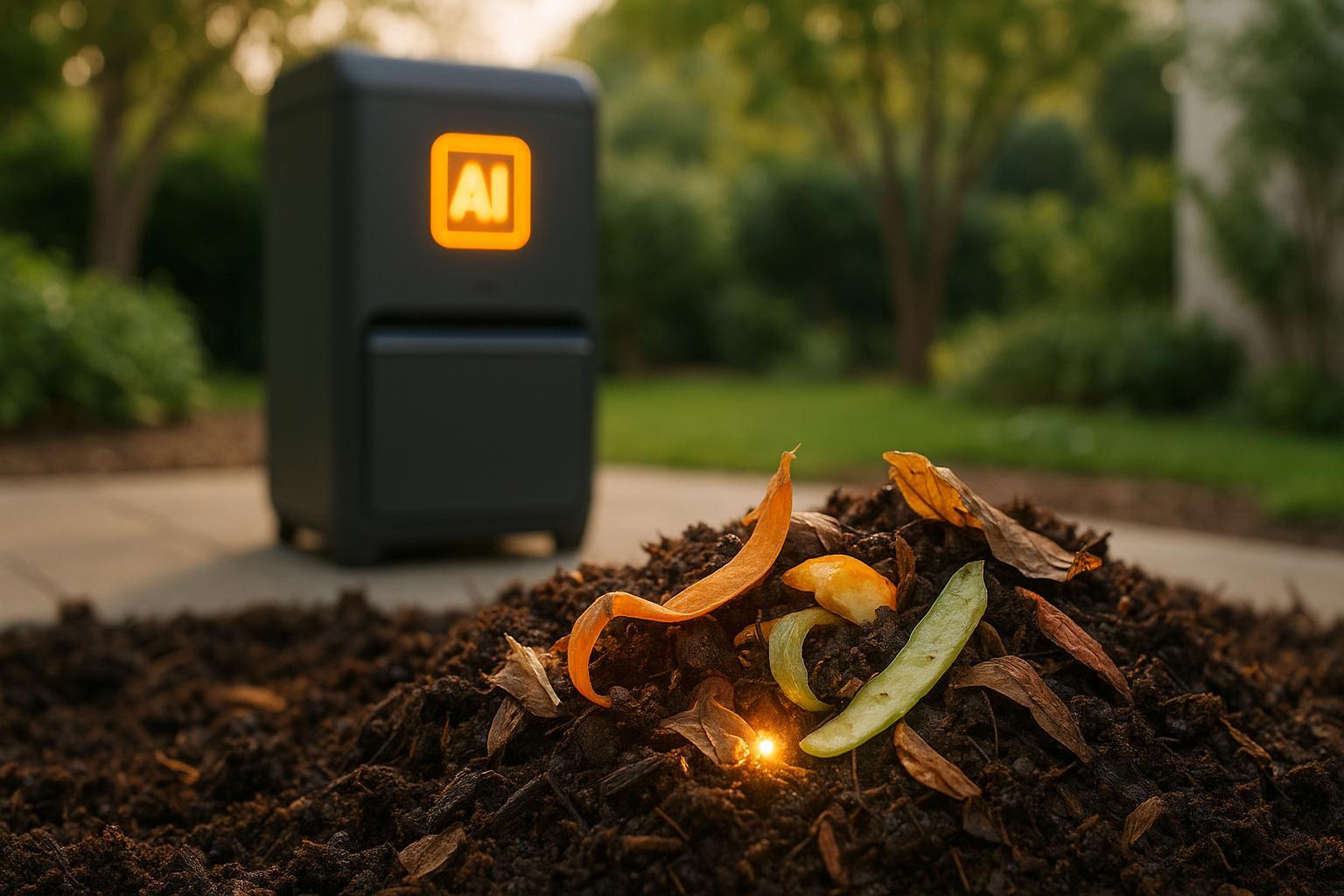
AI Composting: How It Works
Explore how AI composting enhances efficiency, reduces emissions, and transforms organic waste into high-quality compost through advanced technology.
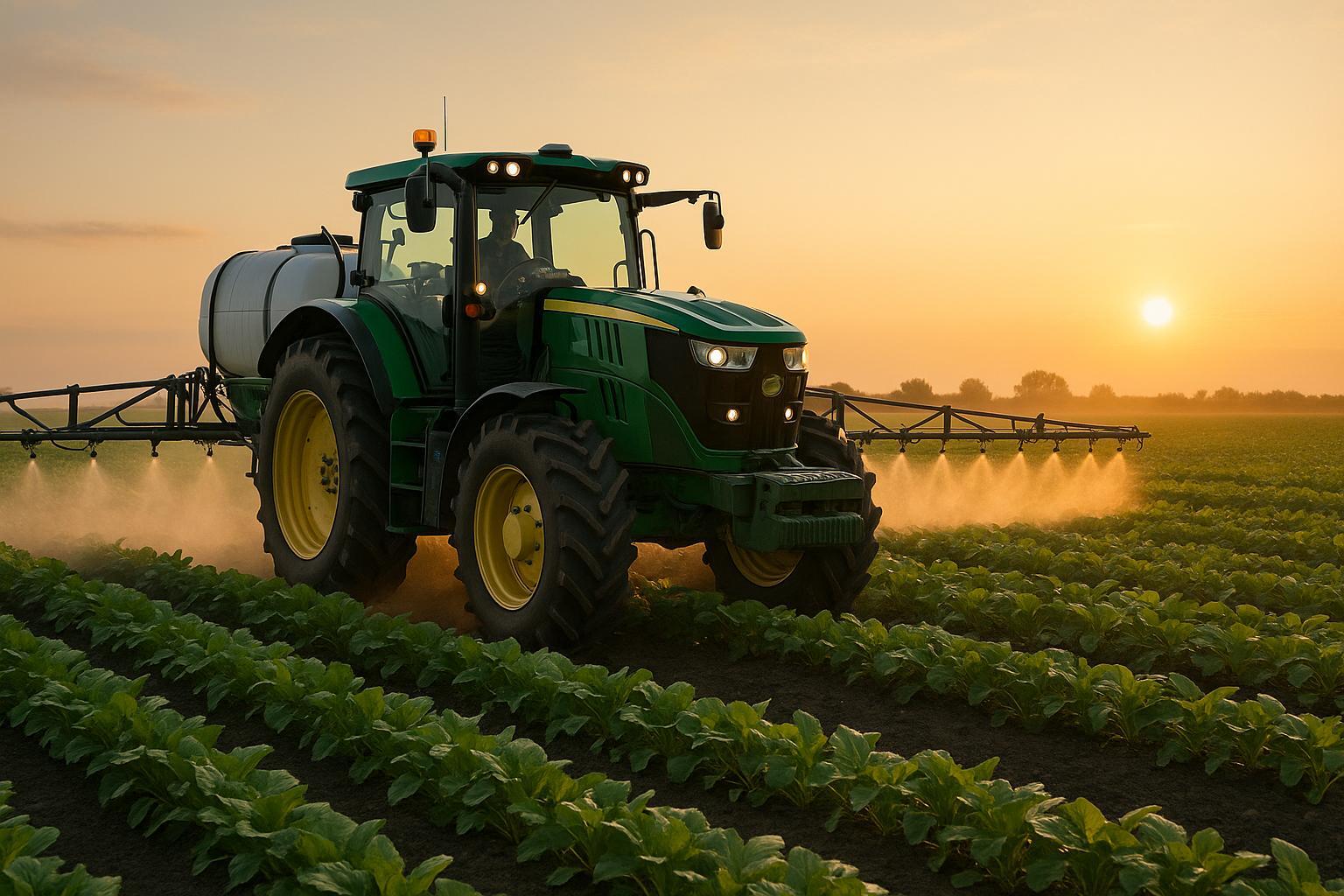
Variable Rate Spraying: Key Performance Metrics
Explore how Variable Rate Spraying optimizes pesticide use, enhancing efficiency and sustainability while reducing costs and environmental impact.
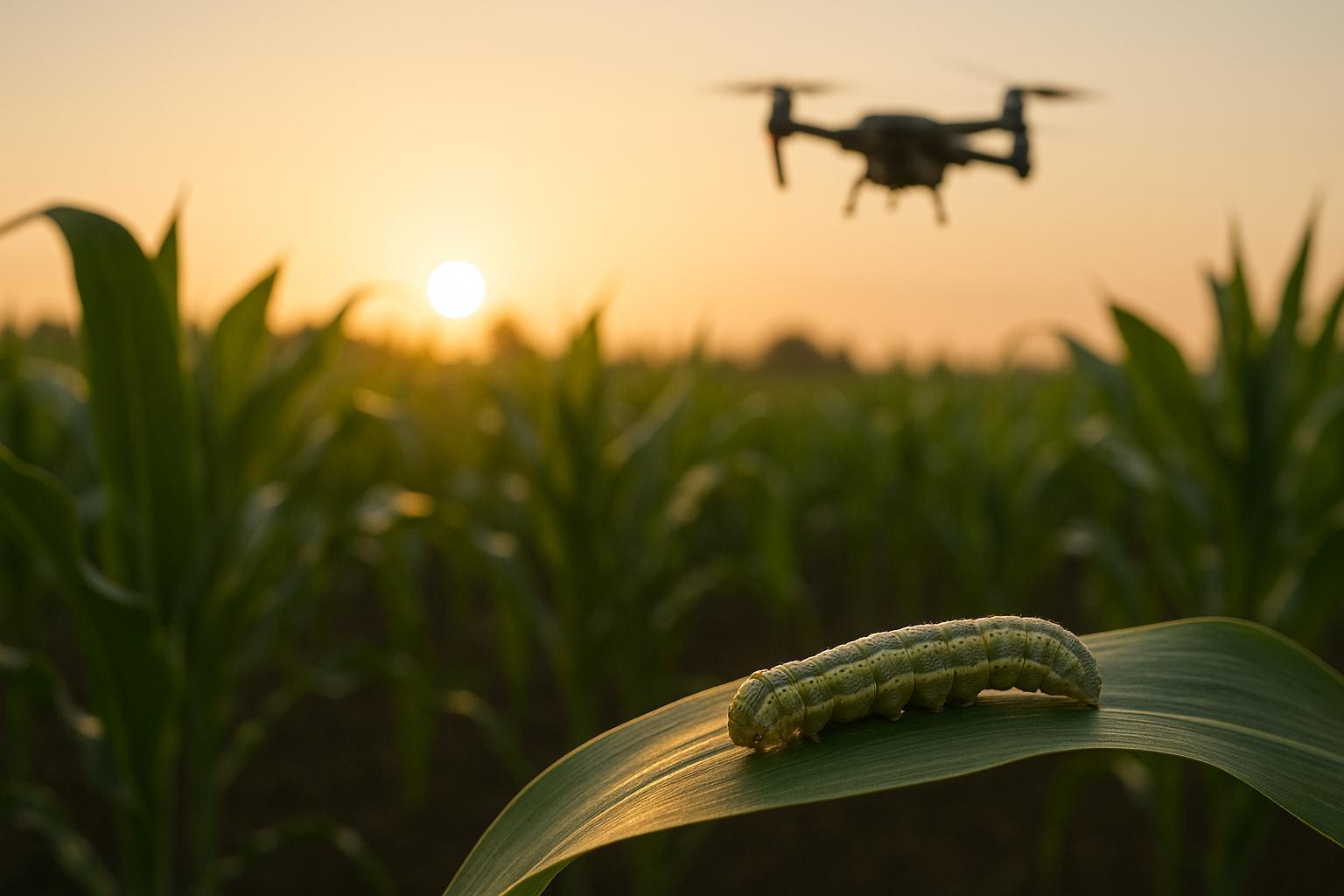
How Machine Vision Tracks Pest Lifecycles
Explore how machine vision technology revolutionizes pest management through early detection, lifecycle tracking, and sustainable practices.
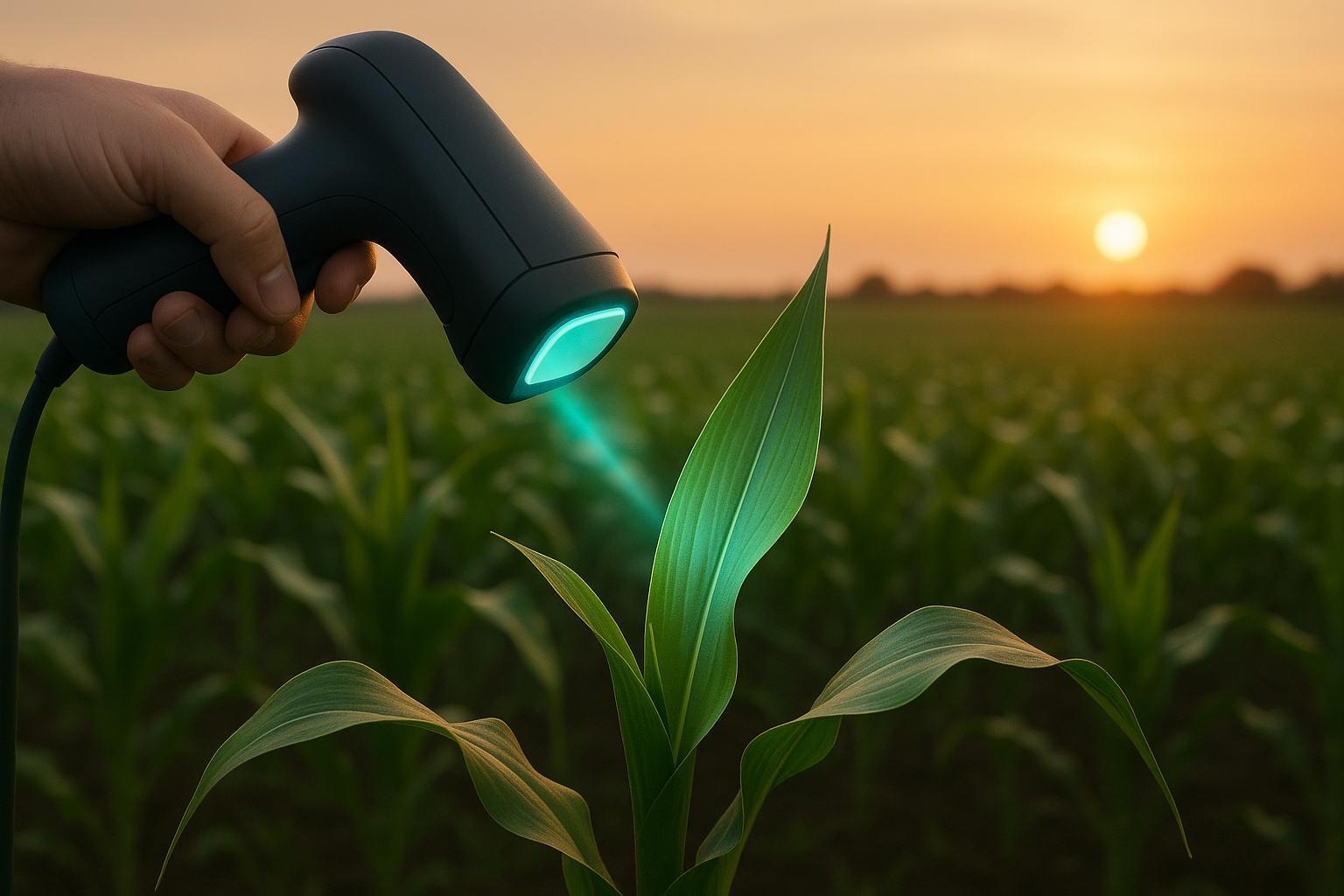
Imaging Techniques for Non-Destructive Disease Detection
Explore advanced imaging techniques revolutionizing non-destructive plant disease detection, enhancing early diagnosis and crop management.
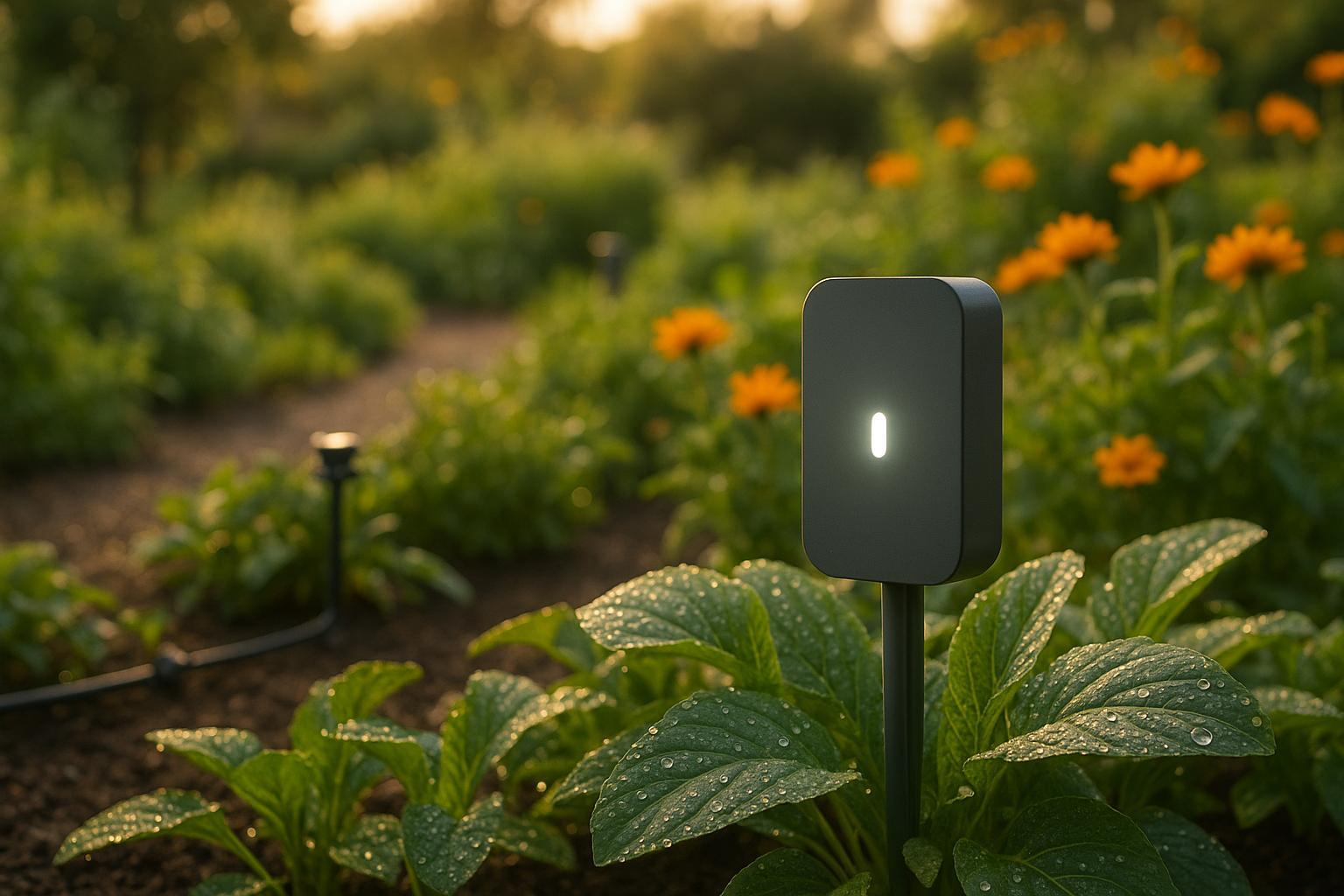
AI Sensor Fault Detection for Gardens
Explore how AI-driven sensor fault detection enhances garden management by ensuring accurate data for pest control and irrigation.
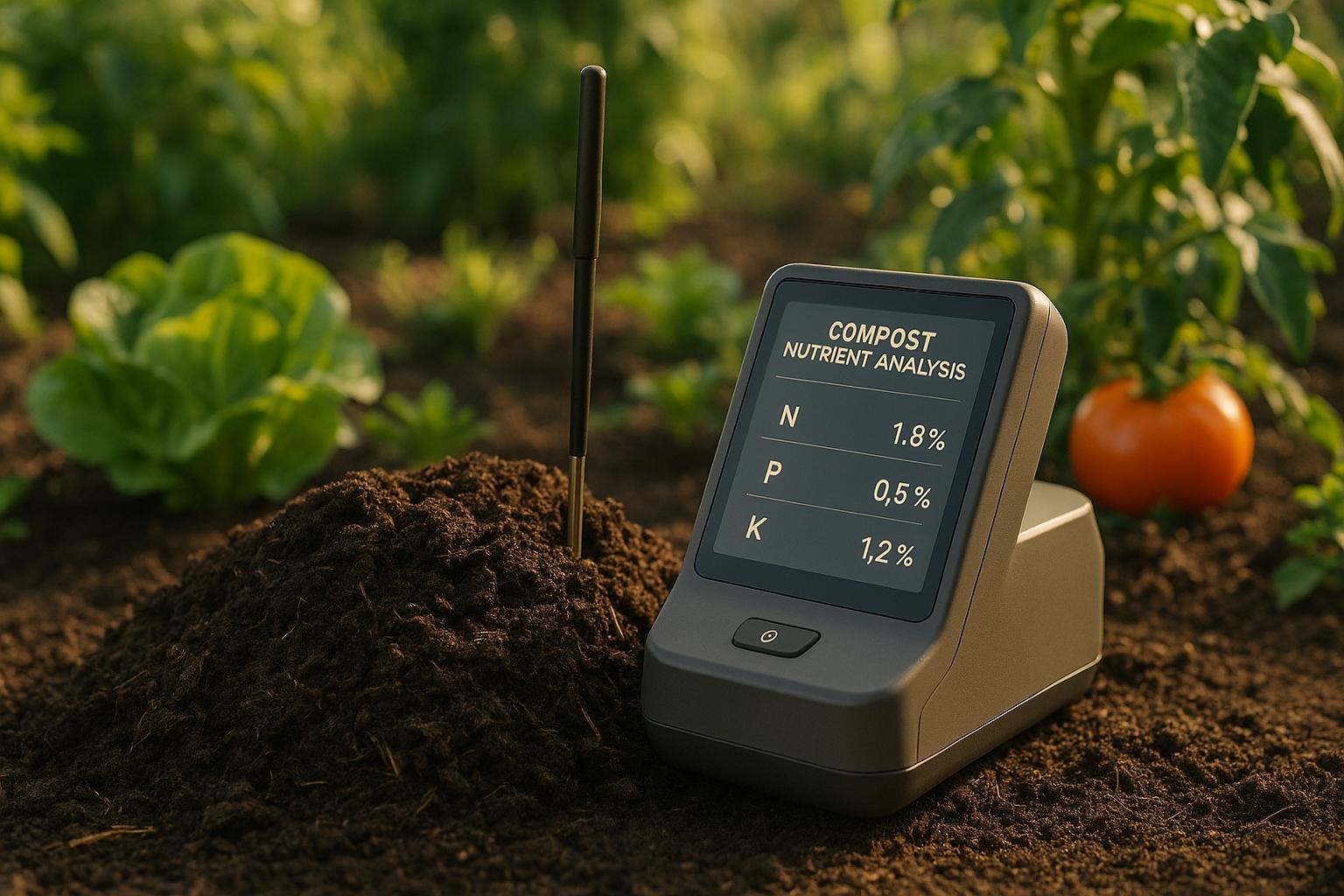
AI Tools for Compost Nutrient Analysis
Explore AI tools that enhance compost nutrient analysis, offering faster, accurate insights for gardeners and farmers at all levels.